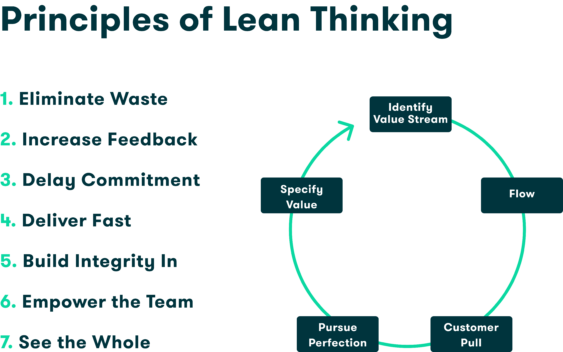Reducing the time to market can play an important role in the success of any digital product.
For most companies, the goal is to develop a quality product to market as speedily as possible in order to catch the fast-changing market opportunities. Sometimes they’re working with a relatively short runway in terms of funding available, which is a good reason to try to have a viable product out before funds dry up.
In many cases, reducing the time to market quickly can make all the difference. This is especially true in terms of beating the competition as it helps become a preferred solution in a specific category. Imagine if you were Dropbox before Dropbox, or Salesforce before they came onto the scene and dominated. Hitting the market first can be a critical success factor.
That being said, it’s a fine balance when you’re going through the software development process. You want to reduce time but you don’t want to impact the quality of your product, and you also don’t want to get into a “paralysis by analysis” situation in which the development time of features is extended.
How can you reduce time to market for digital products? Let’s look at a few tips:
What Is Time to Market
The time to market refers to the period of time that occurs between the moment a product or service is conceived and the moment it is ready to be sold. This is a critical stage of any digital product because companies usually have budgets and resources allocated to product development, and failing to meet those goals might result in the inability to meet customer expectations, debt, or even worse, bankruptcy. Although having some flexibility in terms of the time to market is ideal, you don’t want your company to be so flexible as to extend the project each time a deadline goes unmet.
How to Reduce Your Time to Market
There is no one size fits all strategy for reducing the time to market of digital products. However, these are some of the best actions you can take:
#1. Go “Lean”
Within large companies, in particular, their strength in numbers, resources, and experience can also become a weakness. With product teams working in silos, reporting structures that can be burdensome, and having to work with and account for input across multiple stakeholders, it’s no wonder that project timelines are often slow.
Going “lean” in a digital product development sense borrows principles from the Toyota Production System, emphasizing “the quickest and most efficient way” to deliver products. Consider two of the underlying principles behind Toyota’s system:
- Jidoka (highlighting or visualization of problems) – Quality must be built into the manufacturing process.
- Just-in-time – Making only what is needed, when it is needed, and in the amount that is needed.
Both of these principles are seen adapted to the software development environment when we look at the lean or Agile methodology. Agile development sees “sprints”, or short but specific actions, to complete sections of development. This requires reviewing work from the sprint period, thus building quality into the process. Ideas such as a “Minimum Viable Product” borrow from that “making what is needed, when needed” principle.
You could also look at the seven principles IBM lays out for lean development, and see how “eliminating waste” is essentially the same thing.

One efficiency that larger companies can create to foster those principles was examined at length in a McKinsey report – the DevOps team. DevOps is the integration of product development and IT teams in order to create a focus on continuous delivery.
As McKinsey shares, having these two capabilities can help a company increase its speed to market. This is a result of reduced product-testing times. Additionally, costs can be reduced significantly when delivering new products and services. Lastly, DevOps best practices can help guarantee the software’s quality, increased customer adoption, and fewer overall risks.
The heavy emphasis of going lean is based on simplification. For example, if you’ve got a DevOps team, you should have a “single source of truth” for all software, helping to break down any silos or communication issues. How can you shed “weight” within your organization so that projects are more streamlined? Sometimes the delay in time to market is all in the structure of how projects are managed.
#2. Consider Product Team Location
There are pros and cons for both co-located and distributed teams, and it’s worth considering these and how they can impact your project delivery time.
For example, co-locating your team can help to improve communication speed and effectiveness, which can improve overall project performance. On the other hand, being co-located builds in an instant limitation or inflexibility, with the potential to slow your team. With many teams going remote, being resilient and able to work at a distance is a must.
Distributed teams can have challenges with communication, especially across languages and time zones, but they also have the potential to work around the clock to get a project finished. While your team members are sleeping in the U.S., your team members in Asia or Europe are getting on with work. Another point here is that, without the inflexibility of having to be co-located, you have a better chance of accessing the skillsets you need on the team. You’ve got far more options when you look at remote locations.
Overall, if you’ve got a good communication system, in our experience, a distributed team can be your best way to speed up the project.
#3. Communicate Well
This is not just about tools and methods (although these play into it), but about what you communicate too.
Ensure that from the first day the project is conceived, expectations, goals, and the roles of each team member are communicated clearly. This will also elevate the decision-making process. Some of the major delays on development projects have happened when these things have been unclear. Someone thinks that someone else is tasked with a critical piece and the other person thinks the opposite. When the core goal of the end-product is unclear, teams can waste weeks going down rabbit holes and focusing valuable time and energy on the wrong things.
You can provide the team with good background information, as it helps to give them overall context for the project. Keep in mind that key information can also help to drive motivation for the project and engage team members around common goals. Additionally, it can also be one of the best ways to generate ideas for improvements – if the team knows the overall purpose, it is better placed to make suggestions for why one thing may be more convenient than another.
With goals, roles, and expectations communicated early, it is important to have the systems in place to maintain good communication throughout the project. For example, do you have a “single source of truth” for code? What about project management tools and communication systems such as Slack? How do you track what has been done, by whom and when? Getting the most out of your project team means investing the time and resources into setting them up for success.

Final Thoughts on Reducing Time to Market
Product speed to market can be an important factor for the competitiveness of companies. Efficiency is an important part of managing that speed, but this should never be at the cost of product effectiveness or the quality of the work being done.
Getting to market as efficiently as possible isn’t an easy task, but it’s definitely made simpler if you have a good foundation, such as lean systems, efficient use of human resources, and effective communication. Lacking any of these things could be potential liabilities for your company, so get them addressed early on.
Koombea helps companies to develop quality digital products efficiently so that you meet your time to market goals. Contact us today and learn how we can help you.
